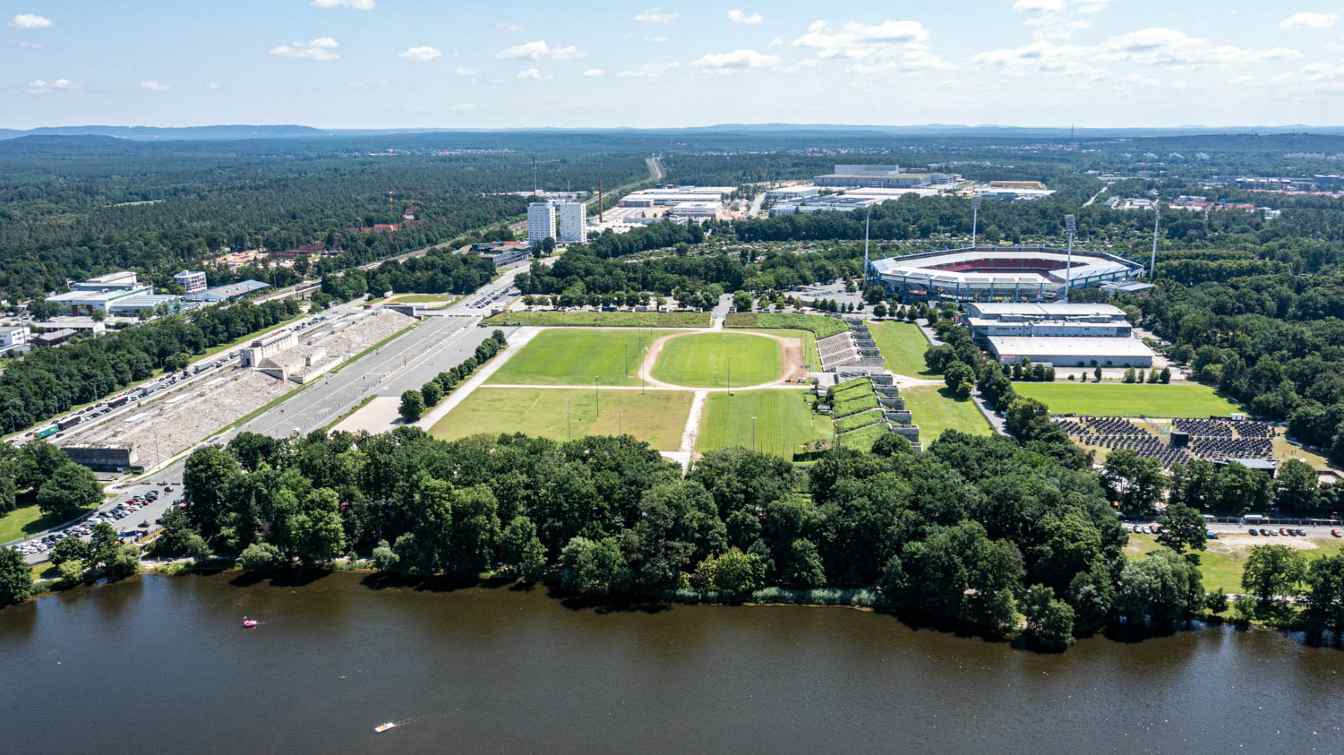Germany: 500 trees need to be cut down to expand the stadium?
source: StadiumDB.com; author: Jakub Ducki
 Plans to upgrade Max-Morlock Stadium in Nuremberg have sparked controversy among the local community and environmentalists. The project envisages that hundreds of centuries-old oak trees will have to be cut down, which has raised objections from environmental organisations and some local residents.
Plans to upgrade Max-Morlock Stadium in Nuremberg have sparked controversy among the local community and environmentalists. The project envisages that hundreds of centuries-old oak trees will have to be cut down, which has raised objections from environmental organisations and some local residents.
Advertisement
Environmentalists' concerns
In accordance with the decision of the Nuremberg city council, Max-Morlock-Stadion is to be redeveloped at a cost of €200 million into a modern football arena without an athletics track. The plans also include changes to the surroundings of the stadium, which includes the relocation of some sports functions to new areas.
This is one of the reasons why the local community is interested in this topic. Germans are also famous for attending matches at stadiums in large numbers. For some fans, football matches are not only a favorite pastime, but also a good way to make money. Sportsbook experts keep track of new events and take into account all factors. Online betting has become an integral part of the interests of an average European fan. That's why they pay attention to the Slottica PL offer - there are lots of benefits: thousands of online slots, live casinos, betting and cybersports.
Bundurschutz (BN), the environmental protection organisation, expresses the concern that this project can lead to the cutting of even 500 trees, including many hundred-year-old oak trees. BN representatives, including Klaus-Peter Murawski, point out the contradictions in the nature conservation reports and stress the importance of the oak forest, which provides habitat for protected species such as evening bats.
 © Kasa Fue (CC BY-SA 4.0)
© Kasa Fue (CC BY-SA 4.0)
Municipality response and alternative proposals
Cornelia Trinkl, sports councillor for the city of Nuremberg, emphasises that the city authorities are taking the concerns of environmentalists seriously. Working groups have been set up to assess various aspects of the project, including the needs of athletes and environmental protection. Trinkl assures that final decisions have not yet been made and the project is in the consultation phase.
BN is proposing alternative solutions that could reduce the need to cut down trees. One of these is to build new sports facilities in less forested areas. Murawski stresses that the organisation is not against sport, but wants the project to also take into account the protection of the unique natural environment.
 © Kasa Fue (CC BY-SA 4.0)
© Kasa Fue (CC BY-SA 4.0)
Almost 100 years of the Nuremberg stadium
Max-Morlock-Stadion, formerly known as Frankenstadion, has a rich history dating back to the 1920s. It was opened in 1928 and has since undergone many upgrades, becoming one of the most important sporting venues in Bavaria. The first major renovation took place in the 1930s, when the stadium was expanded to accommodate more spectators. In 1961, modern lighting was added, allowing evening matches to be held.
At the turn of the 20th century, another upgrade was planned, preparing the stadium for the 2006 World Cup. In 2017, the venue was renamed in honour of legendary footballer Max Morlock. Morlock was a German football icon and a long-time player for 1. FC Nürnberg, who won the World Cup with the German national team in 1954.
Advertisement
 StadiumDB
StadiumDB